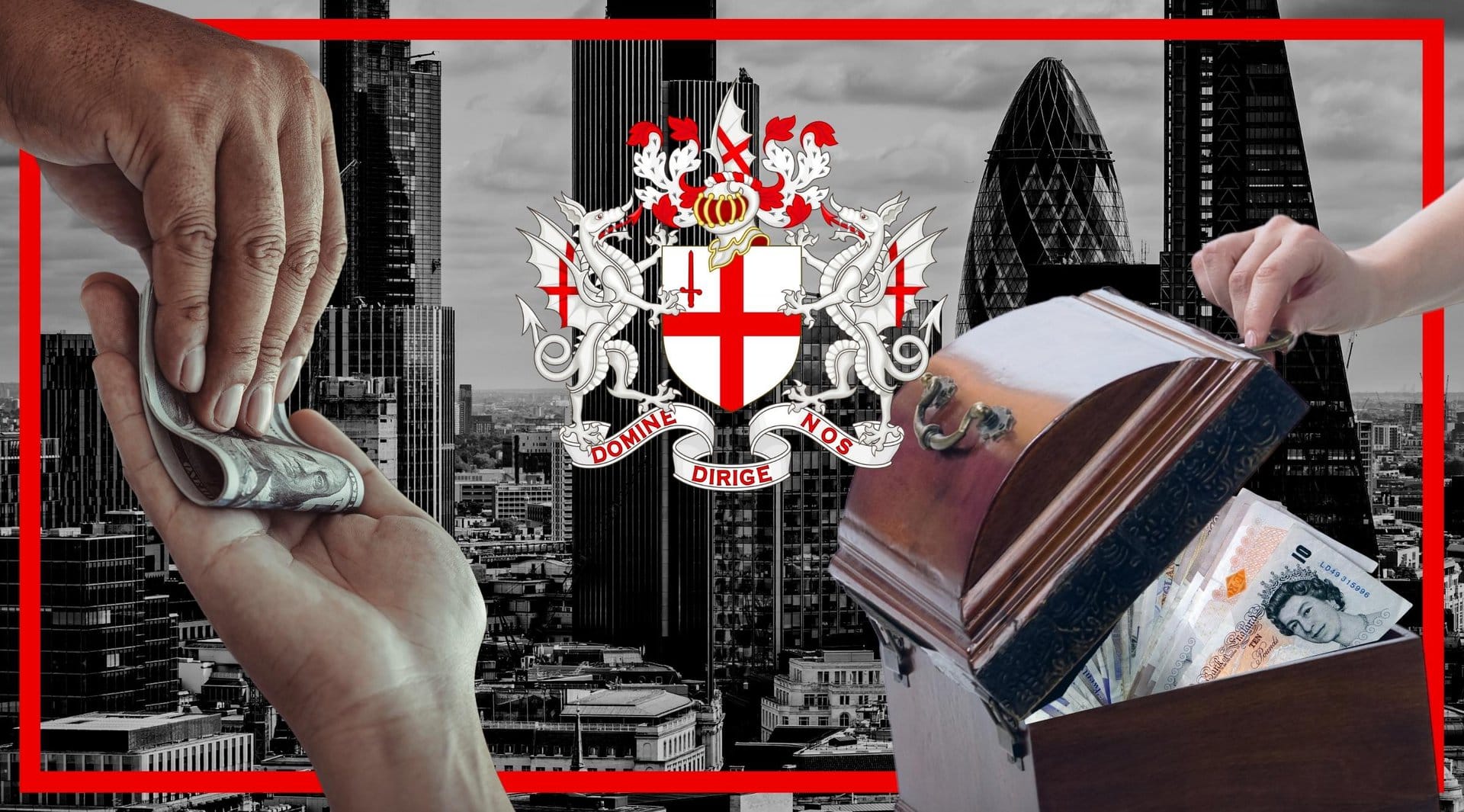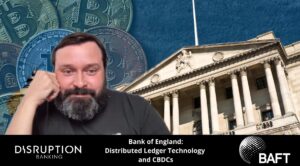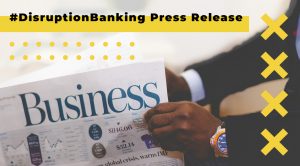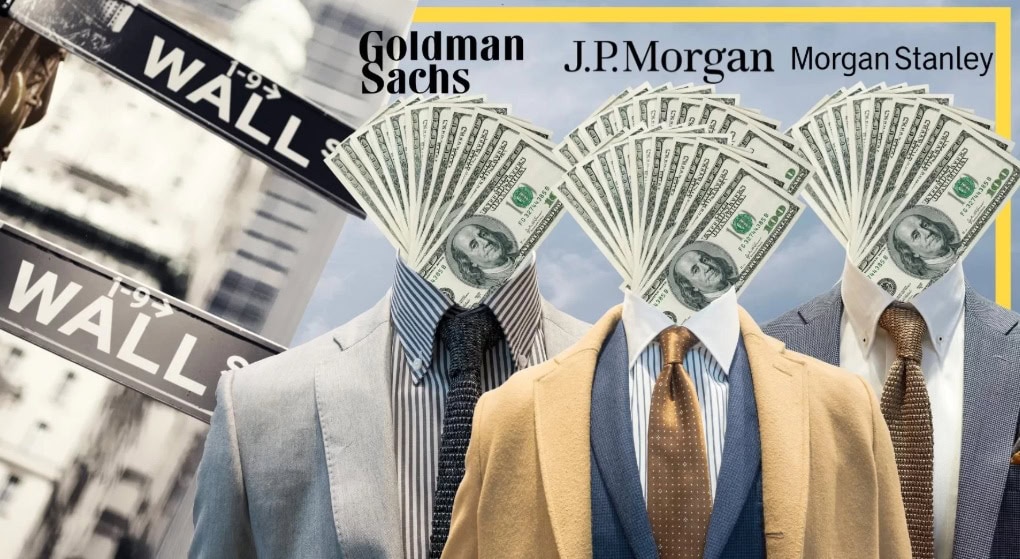“It’s the dark heart of Britain, the place where democracy goes to die.” You’d be forgiven for thinking this describes a seedy underbelly of society – perhaps a British mafia. In actual fact, George Monbiot is describing The City of London. Not London, the geographical location, but the borough known as The City: the financial district of London which is governed by The Corporation of The City of London. How can a square mile of land hold such significance and also be such a threat to democracy? The answer partially lies in its history.
East India Company
2000 years ago, Londinium was set up as a trading post by the Romans, and it thrived. When William the Conqueror rose to power, he allowed The City to have certain privileges so long as they accepted him as King. Soon, later rulers created Westminster due to being threatened by the power of The City. In 1191, The City of London was declared a commune, which was just one rank below the sovereign. Often, the city was asked to extend its privileges to other areas, however, in 1637 this was firmly refused, leading to the consolidation of a separate self-governing city within a city.
Despite this, in Niall Ferguson’s book Civilisation, he refers to the City of London as an “outback” in the 15th century, especially when we look at some of China’s great cities. What changed? A small building about five windows wide. Otherwise known as The East India Company. This was a corporation like no other, one which held the power to take land and wage war for it. The East India Company was a trading corporation that was formed to trade in the Indian Ocean region, eventually colonising large chunks of India, as well as parts of Southeast Asia and Hong Kong. This company was once the largest in the world and had armed forces that were twice the size of the British army. The East India Company brought huge amounts of money into The City, as well as people from all over the world. This led to, between 1825 and 1925, London having the largest population of a single city in the whole world.
There are historic links between The City of London and the East India Company. Charles Peers, Chairman of the East India Company in 1714, was also the Lord Mayor of The City of London in 1715. This goes back even further, even as far back as 1599, when a collective of prominent merchants and explorers met to assess the viability of exploring the East Indies for trade under a royal charter (which would later be The East India Company). This group included Stephen Soame, then Lord Mayor of London.
Today the East India Company has almost no landmarks left to discover in London, many of them have simply been torn down and new buildings raised in their place. There are many reasons for this. Not least on the list was the human misery that many considered the price of the Company’s expansion. It’s thought that Britain robbed India of $45 trillion between 1765 and 1938, as well as causing the deaths of over 1.8 billion Indian people from deprivation. The other was related to the success that many merchants were attaining due to the nature of the Company’s business. Watching famous merchants like Robert Clive buy themselves status, seats in Parliament, and big houses in the country did not sit well with the “establishment.”
India fifth-largest economy in the world after pushing its coloniser Britain to a 6th spot.
— Monica Verma (@TrulyMonica) September 2, 2022
They looted $45 trillion of wealth from India till 1947. In 75 years, India bigger economy than Britain. 🇮🇳✌️
Yet the Company did leave a huge mark on the City of London. Nick Robins book The Corporation That Changed the World gives some excellent insights. In the book, Robins argues that the Company was at the forefront of institutional innovation and global transformation in its day. He highlights how “the Company pioneered the shareholder model of corporate ownership and built the foundations for modern business administration.” While the empire collapsed and The East India Company was disbanded in 1874, The City of London continued to be an economic powerhouse.
An Old Boys Club?
This is where we can see that, while somewhat theatrical, Monbiot’s assessment of The City of London as being a place where “democracy goes to die” is not far from the truth. The City of London is a plutocracy disguised as a democracy. The governing structure of the City of London has endured throughout all the transitional phases that the UK has experienced. To ascend in this structure, you have to be recommended by members of the level of seniority above your own at a minimum, making this an insular “old boys club.” The order goes as follows:
- Freemen and Livery of the City
- Court of Common Council
- Court of Aldermen
- Sheriffs
- Lord Mayor
To become a freeman, you must either inherit this title, be recommended by one of the 110 livery companies as well as the aldermen, or carry out exceptional service. It is also expected that a person’s private funds should be used to support The City, meaning the person elected (particularly to the top job of Lord Mayor) should have a substantial fortune behind them. In other words, you have to be rich.
There are 25 electoral wards, however, only 4 of these hold the 8,000 votes of The City’s residents. The rest of the votes are taken up by businesses and corporations. The bigger the business, the bigger the vote. It’s not the workers who vote either: it’s the bosses. Much like the lavish dinners put on by the livery companies and the ceremonies that are performed within The City, the governance of The City seems like the practices of a bygone era.
A Global Reach
While The City appears to be insular and exists as a lone entity in its practices, its reach and influence extend globally. The role of the Lord Mayor is to represent The City’s financial interests on the global stage. However, the release of the Panama and Pandora Papers in 2016 and 2021 marked a turning point. These leaked documents exposed that the UK has links to thousands of firms based in tax havens, moving profits offshore to protect its wealth at the expense of its people. In the wake of the release of the Panama Papers, the International Monetary Fund estimates that profit shifting cost developing countries $213 billion per year: almost 2% of their GDP. Mark Donne, the director of the documentary UK Gold, points out that “every single one of the top tax haven law firms are headquartered in London or headquartered in a UK overseas territory.” These can be traced back to The City in a sort of “spider web.”
#PanamaPapers whistleblower speaks out, despite risks to safety, to say that more needs to be done to combat offshore secrecy. The interview with @f_obermaier @b_obermayer @derspiegel @paper_trail_m is the 1st time "John Doe" has spoken publicly since 2016 https://t.co/s8EsQQUie6
— ICIJ (@ICIJorg) July 22, 2022
It is worth stating at this point that moving money offshore is not inherently illegal, and there can be legitimate reasons for doing so. Indeed, the vast majority of what was exposed in the Panama Papers was not illegal activity. However, tax havens cost governments (approximately) between $400 billion and $800 billion annually. An uncomfortable truth is that there will always be human suffering as a result of exploiting tax loopholes.
Is the City of London a Tax Haven?
The City of London’s unique laws and regulations allow it to direct its money to tax havens, making The City a prime place for foreign bodies to exploit the anonymity and resources it can offer.
Investment management is a UK success story – employing more than 100,000 people and making up 1% of the UK’s GDP.
— City of London (@cityoflondon) March 1, 2022
Find out how you can get involved to help strengthen and promote the UK as an attractive destination for international capital:https://t.co/2aKqGO5XZj#UKInvest
How is this done?
As the British Empire collapsed, along with the East India Trade Company, offshore territories such as the Channel and Virgin Islands were kept. These outposts needed to adapt with the times and take on a new purpose. These became centres for financial secrecy, allowing people to create “shell companies” to hide their dirty money and exploit the global economy. While these companies have to be registered with the UK Companies House, these registrations go unchecked. Shockingly, several companies are registered under Mickey Mouse and Adolf Hitler, making a mockery of UK law and regulation. An address could have countless companies registered to it but be totally empty. These are all hallmarks of shell companies that mask the financial activity of those wishing to remain anonymous. This anonymity is then reinforced by the moving of this money through many different offshore tax havens and banks to create distance between the money and the actual beneficiary.
The City also provides a perfect place to defend dirty money once it has entered the country through:
- Claimant-friendly libel laws
- A vast array of top law firms- particularly those relating to Reputation Management.
- The perceived credibility that comes from English finance
While the Economic Crime Act and #sanctions make theoretically impossible for British law firms to deal with Russian clients, in practice the biggest firms are only "reviewing" whether to cut ties with #Russia. https://t.co/qATreKoEEl
— #DisruptionBanking (@DisruptionBank) September 14, 2022
Property is more often than not an area in which this money is then invested in. Indeed, a person can own UK property through offshore shell companies- and they do not have to say who actually owns it. A report from the Financial Times estimates there are 84,000 anonymously owned properties in the UK and £6.7 billion of UK property has been bought suspiciously.
Russian money
It is not possible to discuss The City without also delving into the murky waters of Russian money in London. Of the aforementioned property, £1.5 billion was bought by corrupt or Kremlin-linked Russians. Indeed, £830 million worth of property is owned by Russians through offshore shell companies.
When the Russian empire crashed down, this led to the creation of a small Russian elite- an oligarchy. The Golden Visa scheme of 2008 allowed individuals such as these to effectively buy UK citizenship, giving them the credibility that they needed, allowing them to put their ill-gotten gains into London to be moved around in order to shift profits and avoid taxation. It is thought that more than 700 people who partook in the Golden Visa Scheme were members of the Russian elite. Much of the money that was being shifted around and laundered was owed to the tax system and therefore the UK public so, when we see the standards of living in the UK slipping, it is certainly unpalatable to think of The City having a potential role in this.
The questions just keep piling up about the golden visa scheme. Why won't the Conservatives publish the review – originally commissioned over 4 years ago? https://t.co/0yU9U1KY4o
— Layla Moran 🔶 (@LaylaMoran) May 4, 2022
There have also been some false starts in terms of remedying this. David Cameron called the heads of British Overseas Territories to the G20 summit in 2013, informing them that he would make them sign a deal to crack down on tax avoidance. This was an utterly empty threat. No deal was signed. The passing of the Economic Crime Act of 2022 has fostered hope, providing the public register that David Cameron promised. This means the actual beneficiaries of property and assets must be given to the Land Registry. It also makes sanctions easier to impose against those who commit financial crimes.
Is this enough? TeleSUR, in their interview with Mark Donne, says even the media outlets reporting on the issue such as “News UK and the Murdoch empire have more than 192 shell companies in tax havens. The messengers that are telling you the story are absolutely using tax avoidance.”
We’re looking at an issue that is incredibly deeply entrenched in our society, all being traced back to a city with a law of its own. According to the Financial Times, 86 UK banks, 81 law firms, and 177 educational institutions in the UK alone have been involved in the movement of dirty money through tax havens. The beneficiaries of this are political donors, are on corporate advisory boards, have bought into UK universities, have children in elite schools, and head up various sections of the UK press. The roots of corruption are deep within The City. The sanctioning of notable kleptocrats, such as Roman Abramovich, as a response to the war in Ukraine, appears performative when we look at our complicity with kleptocracy and dirty money as a whole.
The common discourse surrounding this issue does appear to place the majority of blame at the Russian’s feet. While there are certainly grounds for this, we forget that the Pandora Papers of 2021 exposed the fact that the a huge chank of those owning properties via tax havens are British. The issue surrounding The City of London is not simply that we’ve brought in nations that are keen to exploit tax havens and we are aiding and abetting this- actually, we are among the worst offenders as a nation.
The Financial Times has asserted that the Russian Oligarchs are remaking London in their own image- coining the phrase Londongrad. However, we also have deep involvement (and profit) in murky financial practices also. Take Tony Blair for example, an ex-prime minister that had established links to The City, shown when New Labour dismissed the notion that The Corporation of The City of London should be abolished. This was a turning point, as Labour had held the position that The City should have its autonomy restricted or stripped. Tony Blair also worked with The City in creating the Mayor of London post, reaching a compromise that did not impinge on the Lord Mayor. Blair was exposed as only having paid £315,000 of tax on a £12 million income from one of his companies due to a complex web of tax-exempt expenses amounting to £8 million.
The Pandora Papers uncover unsavoury characters and their financial arrangements, and among the list of deviants is our own former Prime Minister, Tony Blair. https://t.co/HK1EOP9v92 #PandoraPapers #TonyBlair #WarCriminal #r4today
— Counterfire (@counterfireorg) October 8, 2021
The City’s importance
However, is this a necessary evil? The City of London reports that they generate “£70 billion in economic output annually, or 3.5% of all UK GVA. Yet, the City only accounts for 0.001% of the UK’s size.” While tax evasion that The City enables deprives public services of money, The City also contributes a disproportionate amount of money, in relation to its size, to the national economy. The City has more large firms than Manchester, Birmingham, and Leeds, producing more in business rates than all of them put together.
To restrict The City would have implications on the UK economy, particularly the financial services sector, of which The City contributes a quarter of the entire sector’s GVA. Within the Organisation for Economic Co-operation and Development, the UK’s financial sector was the fourth largest in terms of economic output. Can we afford to restrict The City’s activities, given the impact that would have on foreign investment? The City of London has published findings that “London continues to hold the top spot in attracting foreign investment in financial and professional services, attracting 114 projects in 2021 – well clear of Dubai (104 projects), Singapore (103), New York (54) and Paris (51).” These projects bring in significant amounts of money, supporting the national economy and areas within the UK that may not be so economically productive. To put into context, “overall the UK attracted £1.1bn worth of investment in 2021, the largest number of FPS FDI projects in Europe (186), and second in the world only to the US (234)”.
Lord Mayor of the City of London, Vincent Keaveny, has said:
“Despite the challenges of the pandemic, the UK’s financial and professional services sector has proven resilient. The UK’s offer to global investors continues to go from strength to strength due to its unique combination of time zone, language, legal system, global talent, and financial services ecosystem.
“Our position at the crossroads of Europe’s biggest financial and tech sectors make us one of the globe’s foremost hubs for innovation.”
Therefore, when we depend on our financial services sector and benefit from the FDI that it brings in, the moral choice starts to become unclear.
When we open the Pandora’s box known as The City of London, we get corruption and seediness spilling out, infecting politics in the form of corrupt political donors with links to Russian kleptocracy, infiltrating education systems and Universities with dirty money, and a not-so-free press. However, much like the original Pandora’s box, hope emerges in the form of legislation and reform spurred on by leaks such as Panama and (aptly named) Pandora papers. However, The City remains an economic powerhouse- and one that the UK economy depends on.
Author: Charlotte Head
#TheCity #London #TaxEvasion #PandorasBox #Corruption
















2 Responses
It is rampant greed & corruption that will destroy civilisation. It is wrong illegal & unfair to UK taxpayers who have to make up for the lack of taxes due by the rich. Short sighted greed . Trying to justify global leaders, UK & world politicians stealing from their people & salting the money away in the City of London financial cess pit is not a stance that will be respected.
Who can compel ‘bankrupt nations’ to pay up? Such an entity is the world’s lender of last resort. Who is the Federal Reserve and likewise, central bank’s of other influential countries? Much of this activity is run by financial ‘houses’ in the City, and traces where? They are foreign entities at the core of nations great and small. They stem from the influence derived from millennia of hoovering up of assets by one institution. Who could that be? What are the options? Just one.